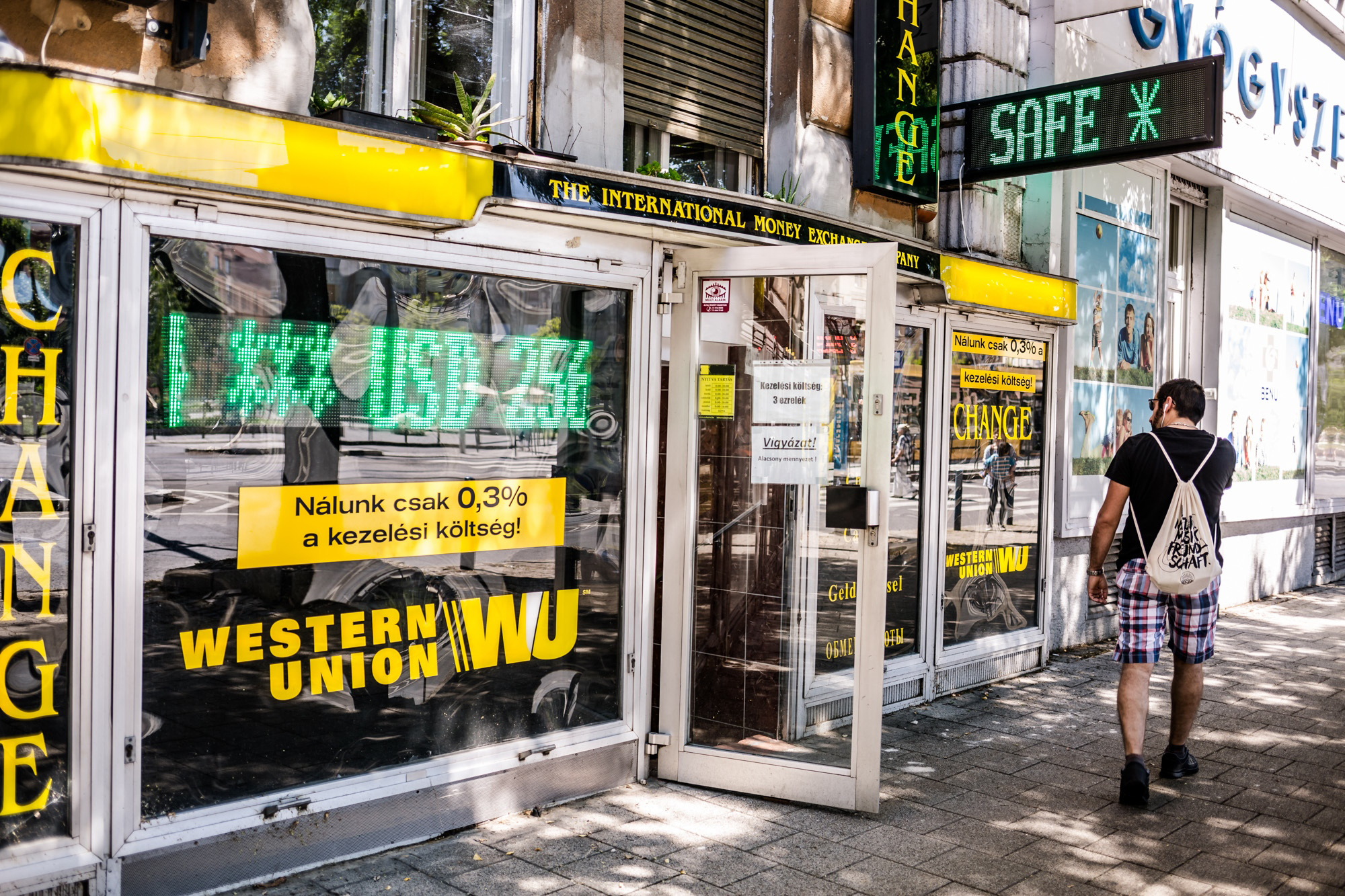EU ≠ Eurozone
Even though Hungary is in Europe, the euro is not widely accepted for payment here. Like several EU countries (including Croatia, Poland, and the Czech Republic), Hungary has not adopted the euro currency for various economic reasons and it apparently will stay that way for quite awhile, resulting in the Hungarian forint remaining the official currency of this country for 71 years now, although Magyars were first recorded as calling gold coins “forints” during the Middle Ages.
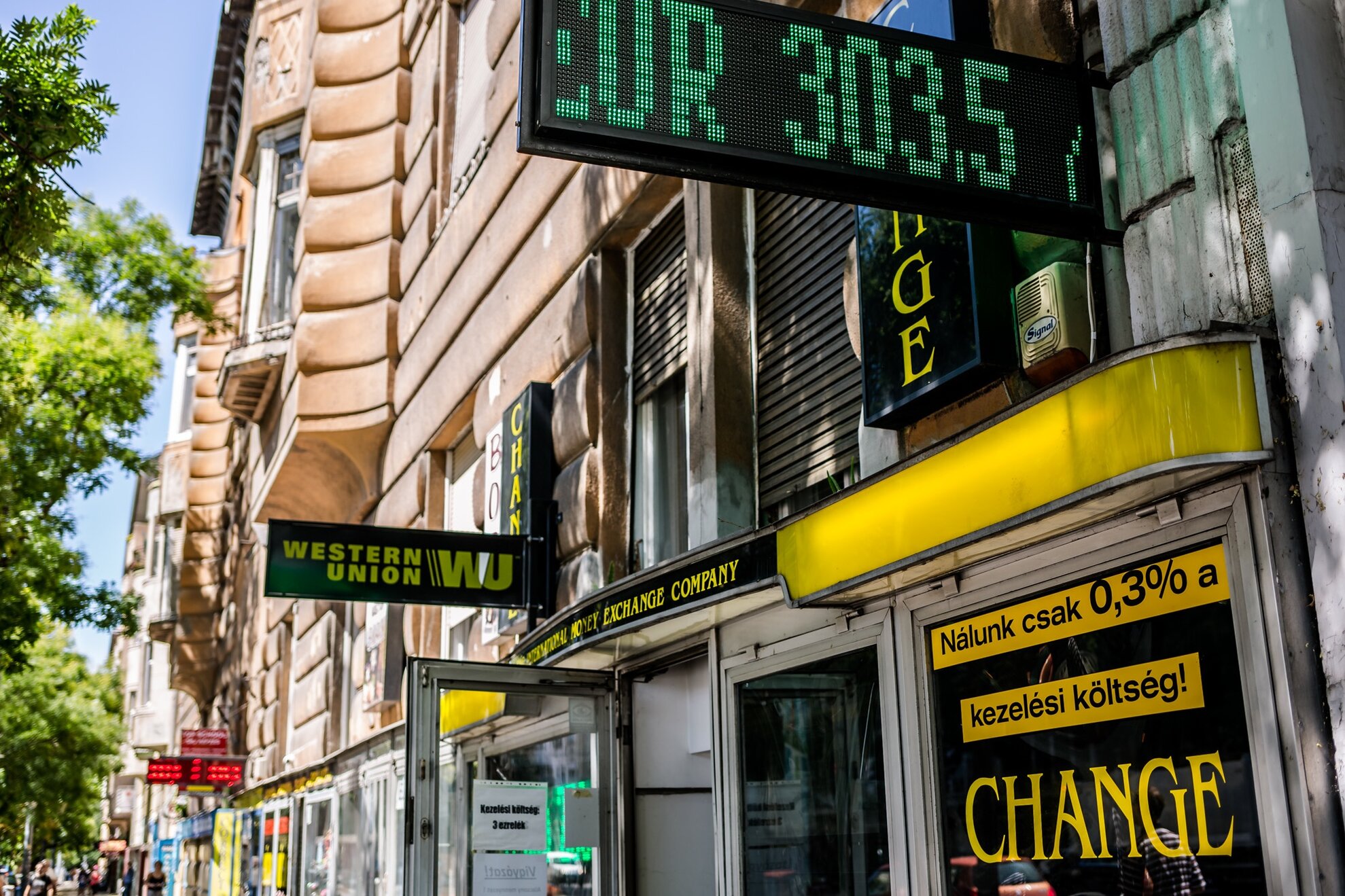
Unfortunately, forints are no longer issued as gold coins, but instead are circulated in denominations ranging from almost-worthless 5-forint coins to flashy 20,000-forint bills… but the international value of the forint changes fairly dramatically over months and years (and sometimes days and weeks), so it is important to have an idea of how much the forint is currently worth before exchanging other currencies in Hungary.
Can I spend euros (or other foreign currency) in Budapest?
It is possible to pay with euros at several hotels, restaurants, and supermarkets in Budapest, and even for some services like taxis or tour guides, but be aware that almost all of these businesses will accept foreign currencies at a rate that is advantageous for them, not for you – and there are some unscrupulous people and places that take advantage of foreigners not being familiar with the the value of forints, and use that opportunity to cheat their clients… so, it is best to change your currency to forints and pay for everything with them as soon as feasibly possible after arriving in Hungary.
How much is the forint worth?
As of press time in early September of 2017, one euro is worth approximately 305 forints, and one US dollar is worth approximately 255 forints. However, this value is bound to change; about a decade ago, one euro was worth approximately 250 forints, while one dollar was worth about 200 forints – and the value of the forint can rise or fall quite dramatically within a much shorter timespan than that, even within a matter of days. Thus, it is helpful to take a quick look at a reputable currency-converter website shortly before visiting Hungary to get an idea of the forint’s current value so that you are prepared to properly assess where to change your money.
Currency-exchange places to avoid Before getting into the specifics of how to assess a currency-exchange booth, here are a few places to stay away from, because you will almost always pay steep rates to change money there:
- Airport currency-exchange booths: almost everything is more expensive at airports than in town, and money-exchange booths are no exception – if you must change money at the airport to function in Hungarian society, buy the minimum amount of forints necessary before you will be in Budapest’s city center, where more reasonable options abound.
- Currency-exchange places near train stations or in touristy areas: similarly to airports, money-changing booths in other major transport hubs often offer expensive rates, and any currency-exchange booth in an area of the city with many international visitors will have to pay high rents for their locations, the cost of which they pass on to customers – usually if you walk just a block or two away from these areas, you will find better options.
- Banks: although many Budapest banks offer currency-exchange services, and this may seem like the safest option, be aware that banks usually charge extremely expensive rates compared with smaller independent money-changing services that are usually found just a few steps away.
- Currency-exchange places open late at night or non-stop: since the proprietors of these businesses know that their customers don’t have many options if they need to change money after-hours, they also know that they can get away with charging extra-high rates for the exact same service available for more reasonable prices during the daytime.
- Shady guys offering currency exchange on the street: never do business with money-changers who approach you on the sidewalk or in other public places – it is a common scam in Budapest that these guys use sleight-of-hand and other tricks to sneakily replace high-denomination bills with low-denomination bills, resulting in the loss of potentially huge sums of money.
Choosing a money-exchange booth
There are plenty of currency-exchange booths found on almost every block of downtown Budapest, ranging from flashy establishments with illuminated signs and digitalized rate displays to tiny dodgy-looking nooks hidden in dark courtyards and underpasses. Believe it or not, it is usually the latter category of businesses that offer the best rates, despite their sometimes-suspicious appearances – but regardless of the way they look, here is how you can tell if a currency-exchange place is offering fair rates for their services.
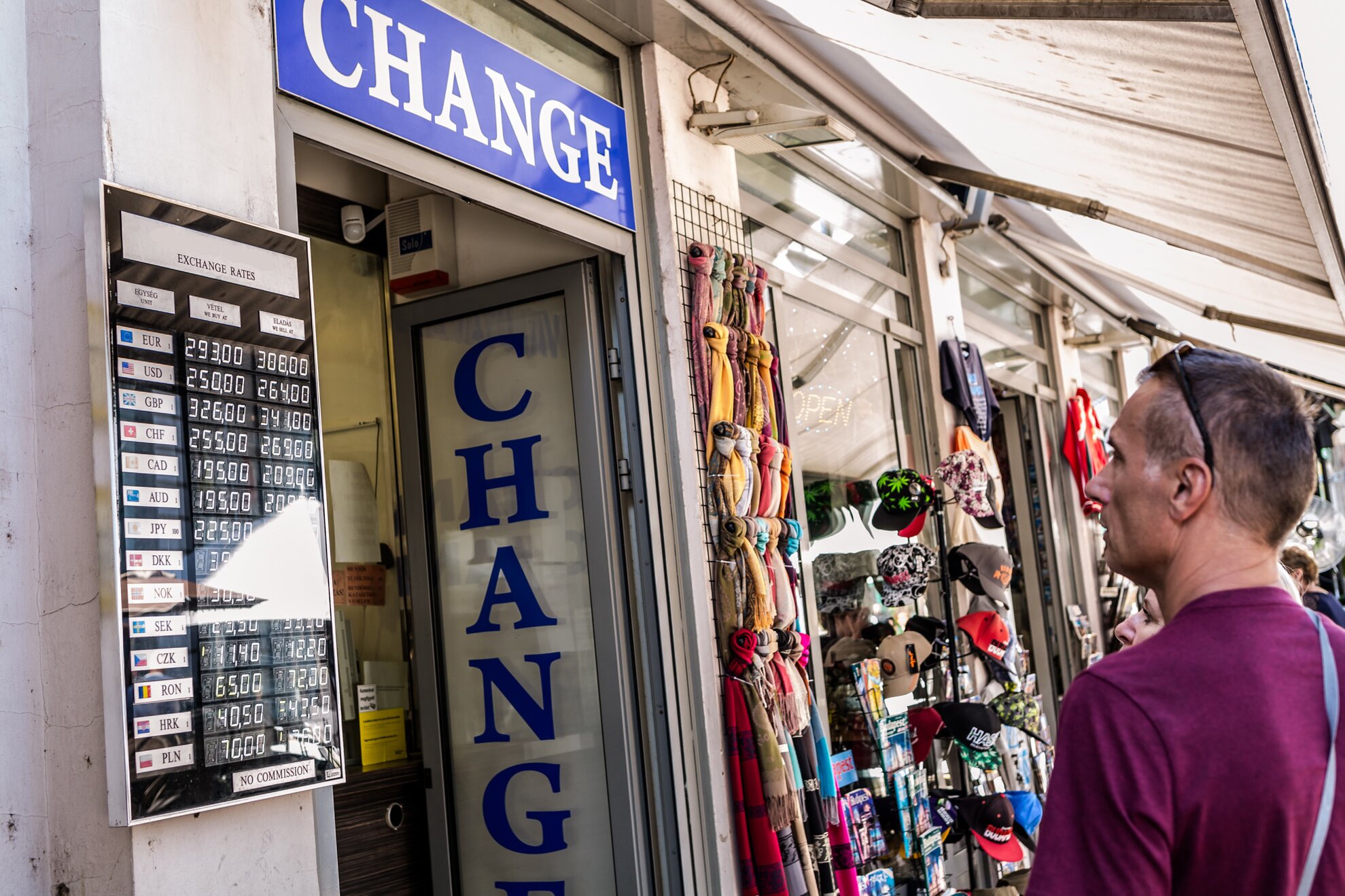
When looking at the display showing money-exchange rates, you will see two numbers for each type of currency – the “buy” and “sell” amounts per single unit of foreign money (one euro, one dollar, etc.) – and at a money-changing booth with good rates, these two numbers will be very close to each other, as the actual value of the forint is approximately the median of these two numbers. For instance, using the aforementioned current euro rate as an example, with its actual value being approximately 305 forints, a reasonable currency-exchange place may offer 303 forints to buy one euro, and 307 forints to sell one euro, meaning that the business makes 2 forints on every euro bought or sold.
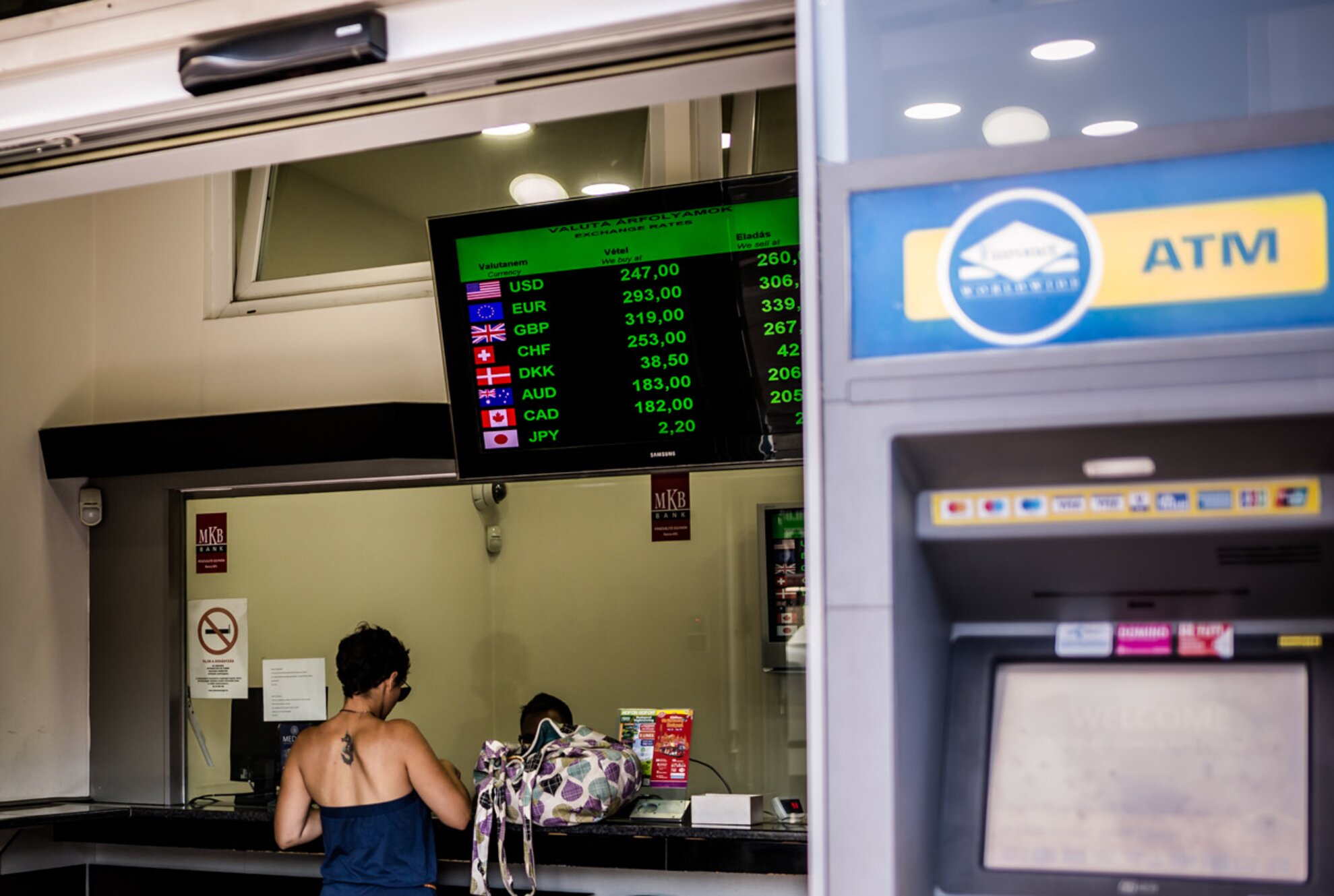
On the other hand, if the displayed rates show that the booth will buy one euro for 300 forints and sell one euro for 310 forints, this means that the business makes 5 forints on every euro bought or sold, which adds up to 500 forints when changing 100 euros at that booth – whereas if you change 100 euros at the hypothetical booth of the previous paragraph, that business earns only 200 forints on the transaction, and thus you save 300 forints. (This example of a less-reasonable booth is actually not too exorbitant compared with rip-off money-exchange booths – or banks – that take as much as 20 forints or more per single euro that they buy or sell.)
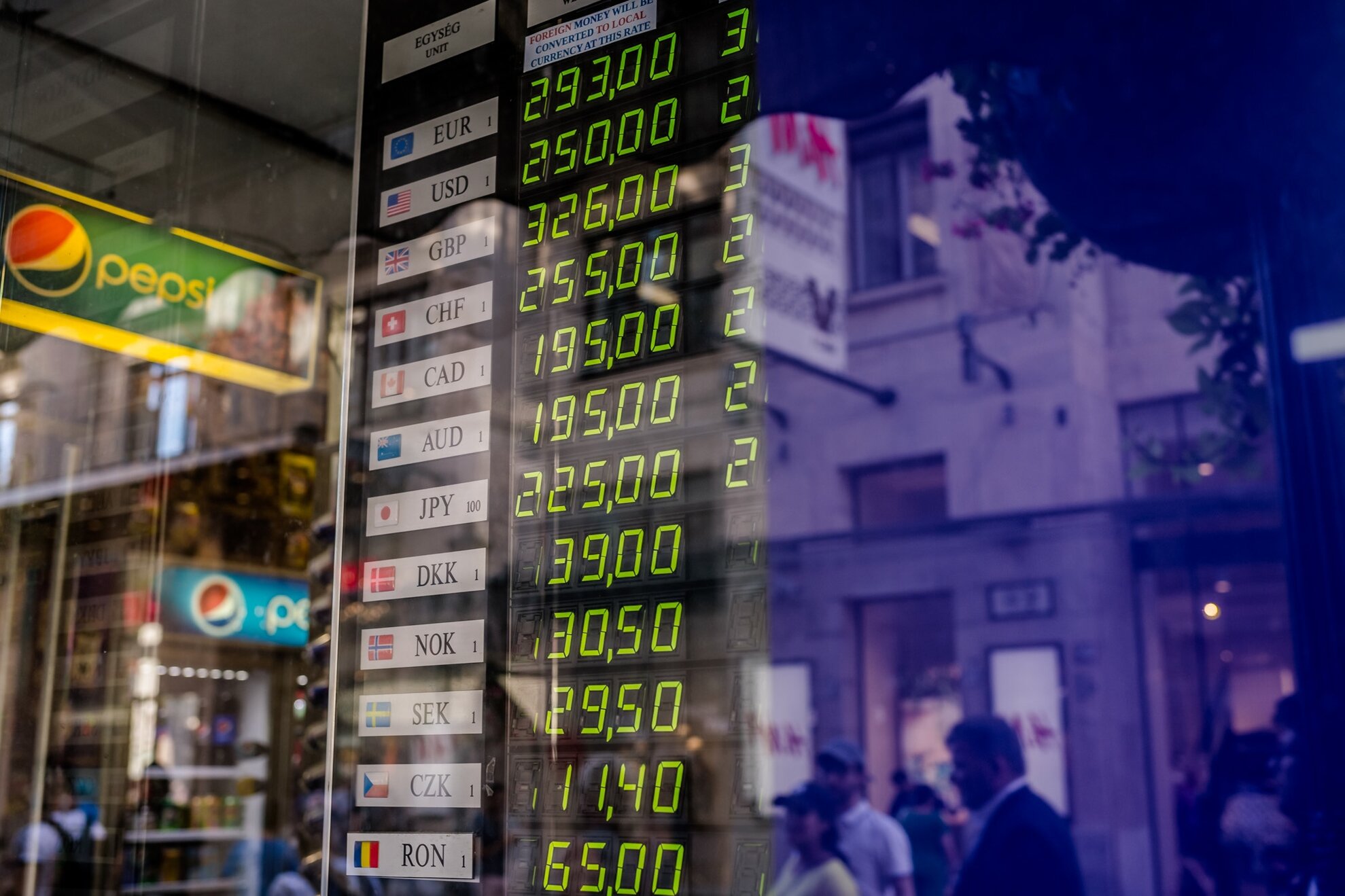
So, no matter what the money-exchange booth looks like, just check the display board and look to see how close or far apart the “buy” and “sell” amounts are, and you can immediately determine if the rates that they charge are reasonable (or at least acceptable) by how close together or far apart these numbers are from each other.
“No commission” is often no bargain
Many Budapest money-exchange places prominently offer “no commission” on their transactions, but this is actually more of a warning sign than a generous sales-boosting strategy. At most money-exchange places that do charge a commission, that charge is about 0.5% of the total up to a certain maximum-commission amount, which is typically 6,000 forints – a quite low charge that is well worth the cost if the money-exchange booth is offering favorable “buy” and “sell” rates. For example, if we go back to the hypothetical currency-exchange place mentioned above where they offer 303 forints to buy one euro and 307 forints to sell one euro, and you sell 100 euros, you will receive 30,300 forints, an amount they multiply by 0.005 to charge a commission of 152 forints, so you end up with 30,148 forints in your pocket.
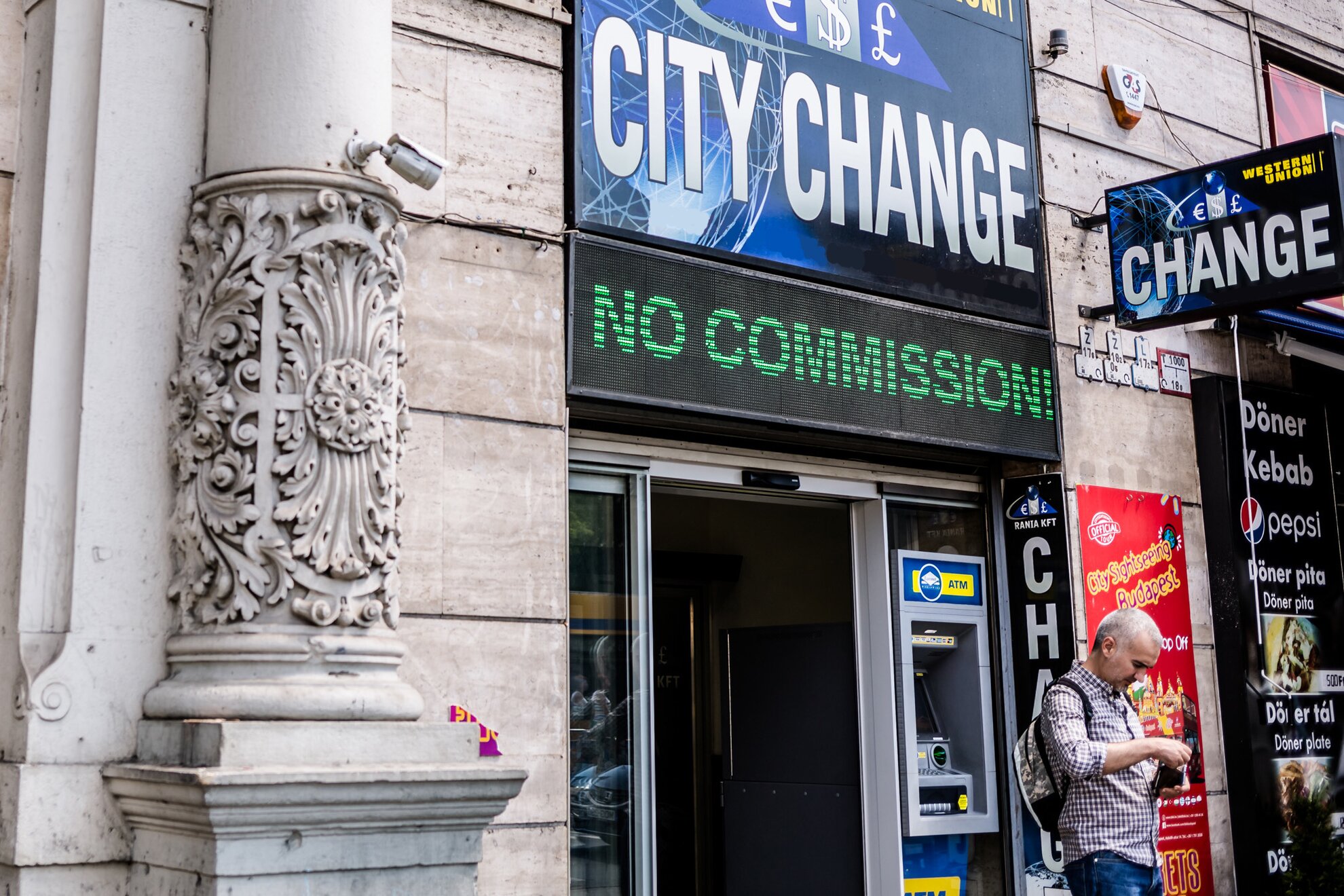
On the other hand, if you go to a money-exchange booth offering “no commission” but unfavorable rates – let’s say a “buy” rate of 290 forints and a “sell” rate of 320 forints – and you sell 100 euros, you only receive 29,000 forints in your pocket, 1,148 forints less than at the other hypothetical currency-exchange place that charges a commission. While 1,148 forints may not be a huge amount, if you are changing 1,000 euros instead of 100 euros, these rates cause you to pay 11,485 forints – almost 40 euros – because you would end up with 290,000 forints in your pocket, whereas at the favorable hypothetical change booth where they charge a commission, you would only have to pay 1,515 forints for the transaction, and end up with 301,485 forints in your pocket. So, don’t be lured into using a money-exchange place just because they advertise “no commission” – the “buy” and “sell” rates are what really matter.
Other tips
Keep in mind that most currency-exchange places will not accept foreign coins, or if they do, they are usually accepted for considerably less favorable “buy” and “sell” rates than what they offer for paper money… so unless that jangling of useless coins in your pocket is really annoying you, it is probably worthwhile to simply tuck them away in your suitcase and then use them back in your home country.
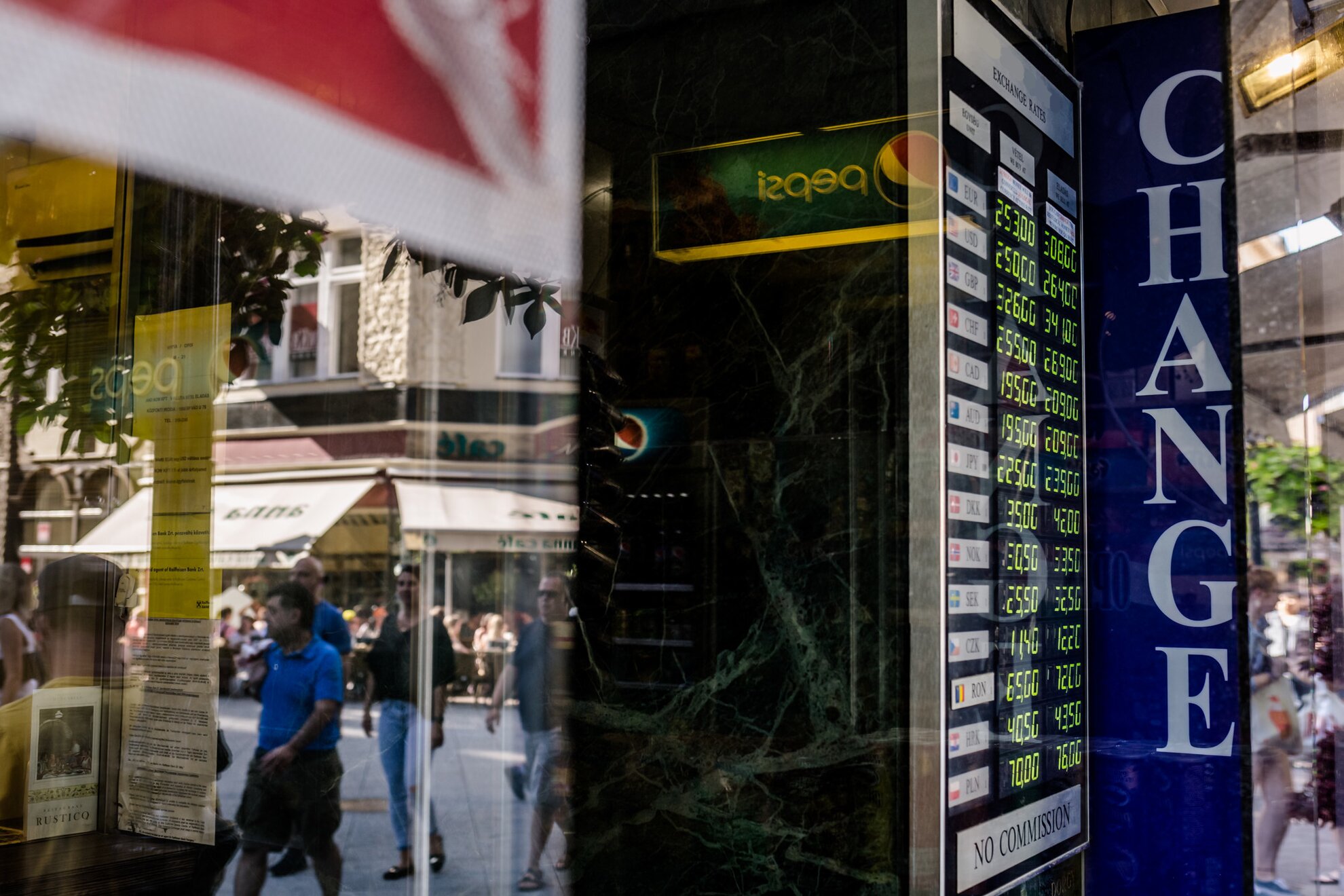
What if you have another type of currency that you don’t want anymore – for example, if you had some kuna left over from your visit to Croatia before you arrived in Budapest and changed euros to forints? Well, unfortunately you cannot change currency in Hungary in a transaction that does not include forints, so you will have to change your kuna to forints, and then change those forints to euros – you cannot change kuna to euros in Budapest’s money-exchange booths, and thus you lose a little money in both transactions. So, make sure to change all foreign currencies into forints at the beginning of your time in Hungary – at a place with favorable rates, of course, now that you know how to find one.
